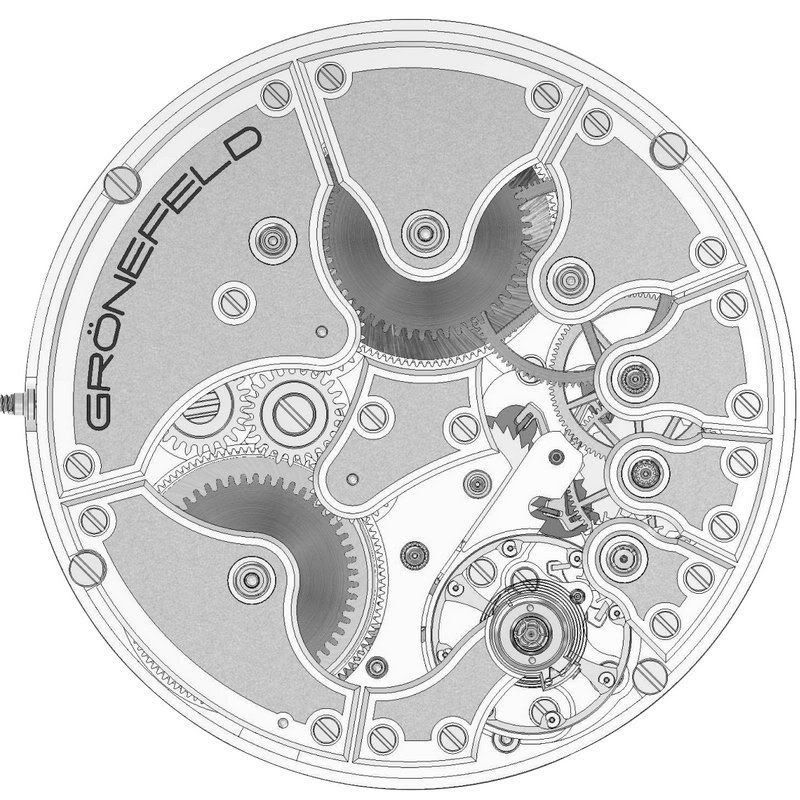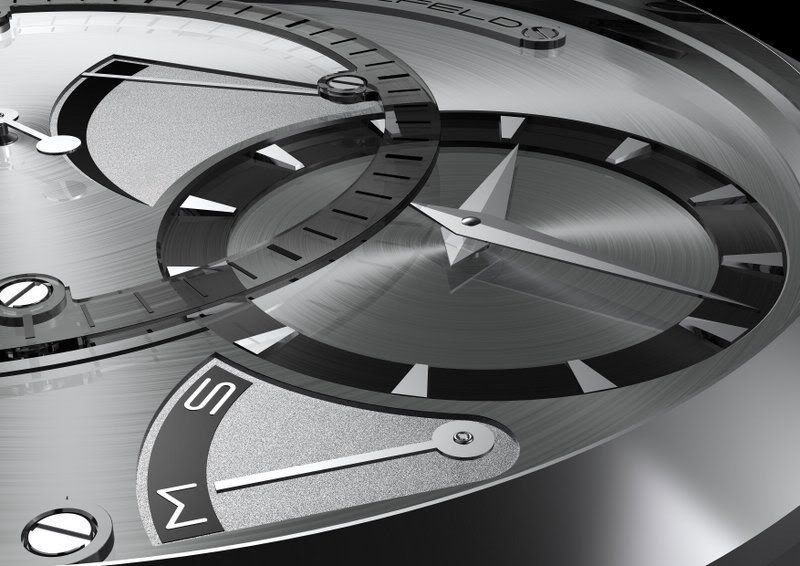''One Hertz'' πρωτο ρολοι παραγωγης
Δημοσιεύτηκε: Σάβ Ιουν 19, 2010 1:47 pm

Introducing "One Hertz"
The world's first independent deadbeat seconds series wristwatch
Dutch watchmakers Tim and Bart Grönefeld present "One Hertz", the world's first and only production wristwatch with independent deadbeat seconds (secondes morte in French). While rare, the deadbeat seconds complication does exist, but to date has been derived from other mechanisms, usually a constant force device or remontoir d'égalité.
The Grönefeld One Hertz features a completely original in-house developed movement indicating hours and minutes on a sub-dial at 2 o'clock, a large sub-dial for the deadbeat seconds filling the majority of the dial with a power reserve indicator at 12 o'clock, and a setting-winding indicator at 3 o'clock. Setting-winding is ergonomically selected by pushing the crown instead of pulling it out.
Deadbeat seconds – where the second hand advances in full steps of one second instead of an apparently smooth sweeping action – was a very respected complication until the 1980s; however, its popularity died with the dominance of quartz movements, which also stepped in full seconds. A smooth sweeping second hand came to differentiate mechanical from quartz.
With their new One Hertz, with its unique secondary gear train, Tim and Bart Grönefeld have resurrected this long neglected complication and re-positioned it where the complication originated, i.e. on the pedestal of high precision.
The quartz-like movement of the large second hand of the One Hertz subtly signals its unique mechanism, invisible to most but obvious to haute horlogerie aficionados who will appreciate the flawless fine-finishing of the in-house developed calibre G-02.
The One Hertz launches with a subscription-only limited edition of 12 pieces in steel called the "One Hertz 1912" –1912 was the year Tim and Bart's grandfather qualified as a watchmaker.
History of the Deadbeat Seconds
With the introduction of the pendulum in the 17th century, clocks finally became accurate enough to measure seconds. It was then not long before a hand indicating seconds on a long clock's dial signified a precision timepiece. A pendulum with a period – the time to swing forward and back – of two seconds (the most common) resulted in a single tick per second.
The invention of the balance spring, which replaced the pendulum, enabled miniaturization. As portable pocket watches became more accurate, watchmakers naturally thought to copy the one-second steps of the second hand, which signified a precision timepiece; however, the rapidly oscillating balance meant that it could not be directly driven from the oscillator as with the pendulum, so it either necessitated a new mechanism if independent, or it had to be driven from another complication e.g., a constant force device. While pocket watches have featured independent deadbeat seconds in the past, the Grönefeld One Hertz is the first wristwatch featuring independent deadbeat seconds.
The Grönefeld One Hertz is unique among wristwatches in that its deadbeat seconds are powered by a secondary gear train that is independent of the gear train for the hour and minute indications.
One Hertz
The hertz (symbol: Hz) is the SI unit of frequency defined as the number of cycles per second of a periodic phenomenon. This SI unit is named after Heinrich Hertz. One Hertz simply means "one cycle per second".
The second (SI symbol: s), sometimes abbreviated sec., is the international base unit of time. To highlight the SI seconds, the One Hertz displays deadbeat seconds with a large second hand in its own dial. Hours and minutes are non-SI units of time because they do not use the decimal system so are displayed separately.
Mechanical wristwatch movements often have balance frequencies of
2.5 to 5 hertz, which results in the second hand making tiny steps of five to 10 steps each second and looking like a smooth movement.
πηγη η επισημη ιστοσελιδα της εταιρειας

